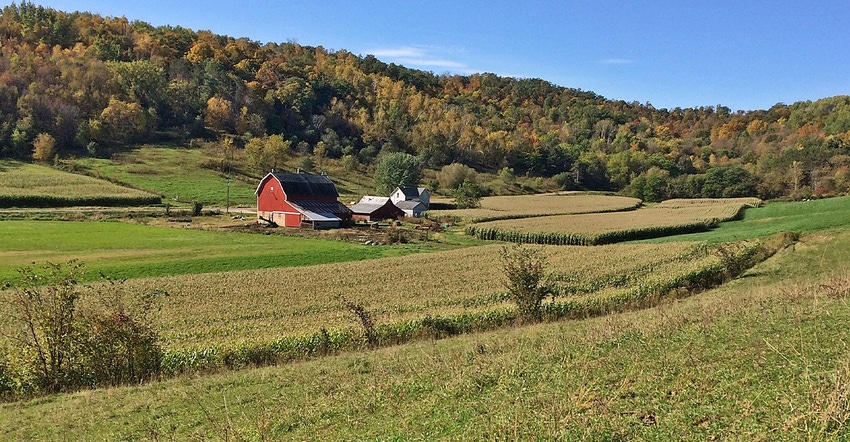October 30, 2019

By Mike Travis
Sustainability is a word that is often used imprecisely, and the meaning gets diluted or seems nebulous. (What does it mean that my coffee is “sustainable” anyway?) Sustainability on the farm is simply a balance between the environment and the farmer such that the farmer’s goals are met, and the environment is not adversely affected.
Sustainability requires systems thinking. This is an approach that recognizes that every part of a system — think of your farm and its environment as a system — affects every other part and is in turn affected by the others.
Let’s consider five facets of sustainability as part of a systems-thinking approach to farm improvement: material, economic, biological, social and ethical sustainability.
Material sustainability. Physics tells us that systems naturally move from order to disorder. To prevent or reverse this trend, energy or work must be expended. For example, healthy soil, left to itself, will erode. Nature or the farmer must invest energy by growing crops to cover the soil and hold it in place.
Livestock, as another example, require balanced nutrition. Energy is expended through walking to fresh pasture (the cow’s input) or through a carefully balanced ration (the farmer’s input). If we allow the farm’s material inputs or resources to consistently degrade, sustainability is lost.
Economic sustainability. Local farm economies are linked more than ever to worldwide economic markets, international economies and political interests. Today, dairy supply management is a hot topic in considering how to maintain dairy farm economic sustainability. The need for government support for low commodity prices or to encourage conservation indicates the complexity facing the farmer seeking economic sustainability. In this context, it is essential for a farmer to know and manage a farm’s economy in detail and with precision. A systems approach seeks to understand the interaction of the other sustainable factors on economic sustainability, and vice versa.
Biological sustainability. A farm is a biological system. The ecosystem in which we work and live provides feedback on whether our practices are sustainable and where we may need to adjust.
For example, in the last few decades, bird populations across the U.S. have declined by 30%. The bobolink and meadow lark, which once marked the beginning of summer in Wisconsin, have all but disappeared from much of our farmland. As pasture and fencerow habitats have disappeared, the wealth of biological diversity that once marked Wisconsin agriculture has been drastically reduced. Is this the cost of doing business or a symptom of unsustainability that can be changed?
Recent research has shown that diverse strips of native prairie planted within a field can have tremendous positive effects on water quality, pest management and wildlife. Biological sustainability can be improved. The farm is an ecosystem that can be managed to nurture and sustain diversity.
Social sustainability. Farming has never really been thought of so much as a career choice but as a way of life. The social aspect of agriculture has always been part of the fabric of the farming “profession.” The detrimental effect of losing small farms on community life was warned by Walter Goldschmidt more than 70 years ago. Wisconsin, known as America’s Dairyland, continues to lose family farms at an alarming rate. With this loss has come the unraveling of the fabric of many of our local communities.
It is encouraging that today there is an agricultural movement that is bringing young people back to the land with innovative livestock and crop enterprises. While we may disagree with some of our new neighbors’ farming methods, we can welcome their contribution to strengthening the social sustainability of our communities.
Ethical sustainability. The last facet of sustainability ties them all together as it defines why we do what we do and how we do it. Ethical sustainability relates to motivation and intention. Ethics sets us apart from the rest of the natural world. And this is what ultimately gives us the responsibility to act in the interest of the whole. Our crops or livestock do not contemplate sustainability; this is uniquely human.
The five principles of sustainability interact in such a way that they cannot be separated without disrupting the whole. By managing sustainability of our agricultural ecosystem using systems thinking, we make decisions informed by the whole farm and move to greater sustainability for us and succeeding generations.
Travis is the agriculture and natural resources Extension educator for Pepin and Pierce counties in Wisconsin.
You May Also Like




